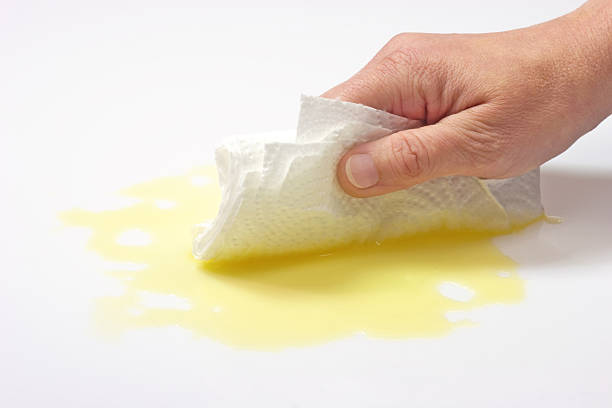Corporate Social Responsibility (CSR) is a cornerstone of modern business practices, reflecting a company’s commitment to ethical behavior, environmental stewardship, and community engagement. In the tissue industry, leading companies are setting examples of how CSR can be effectively integrated into business operations. Here’s a look at how some of these companies are making a positive impact through their CSR initiatives.
1. Environmental Stewardship
1.1. Sustainable Sourcing of Raw Materials
Many tissue companies are committed to sustainable sourcing of raw materials. This involves using certified sources of wood pulp from responsibly managed forests. Certifications such as FSC (Forest Stewardship Council) and PEFC (Program for the Endorsement of Forest Certification) ensure that the wood used in tissue production is harvested in a manner that preserves forest ecosystems and supports local communities.

1.2. Reducing Carbon Footprint
To mitigate their environmental impact, tissue companies are adopting strategies to reduce their carbon footprint. This includes investing in energy-efficient technologies, using renewable energy sources, and implementing waste reduction practices. For example, some companies have transitioned to using biomass energy derived from wood waste, significantly lowering their reliance on fossil fuels.
1.3. Recycling and Waste Management
A significant aspect of CSR in the tissue industry is improving recycling and waste management. Leading companies are enhancing their recycling processes to use more recycled paper in their products. They are also developing closed-loop systems where waste from production is minimized and reused, reducing landfill contributions and promoting a circular economy.
2. Social Impact and Community Engagement
2.1. Supporting Local Communities
Tissue companies often engage in initiatives that support local communities where they operate. This can include providing financial contributions to local charities, supporting educational programs, and sponsoring community events. By investing in local communities, companies not only build goodwill but also contribute to the overall well-being of their regions.
2.2. Enhancing Employee Well-being
Corporate social responsibility extends to the treatment of employees. Leading tissue companies prioritize the well-being of their workforce by offering competitive wages, safe working conditions, and opportunities for professional development. Programs focused on health and wellness, work-life balance, and employee recognition contribute to a positive workplace culture.
2.3. Ethical Labor Practices
Ensuring ethical labor practices is a critical component of CSR. Leading companies in the tissue industry adhere to strict labor standards, avoiding child labor and ensuring fair wages and safe working environments. Transparency in their supply chains and regular audits help maintain these standards and promote ethical practices throughout their operations.
3. Health and Hygiene Initiatives
3.1. Promoting Public Health
Tissue companies play a vital role in public health by providing products that support hygiene and cleanliness. Many companies engage in initiatives that promote good hygiene practices, such as distributing tissue products to underserved communities or collaborating with health organizations to support hygiene education.
3.2. Supporting Healthcare Facilities
Some tissue companies contribute to healthcare by donating products to hospitals and clinics. These donations help ensure that medical facilities have the necessary supplies to maintain cleanliness and support patient care, demonstrating a commitment to health and wellness beyond their commercial products.
4. Innovation and Sustainable Product Development
4.1. Developing Eco-Friendly Products
Innovation is a key element of CSR in the tissue industry. Companies are investing in the development of eco-friendly products that utilize sustainable materials and reduce environmental impact. This includes producing tissues from recycled paper, using biodegradable packaging, and developing products with lower environmental footprints.
4.2. Investing in Research and Development
Leading tissue companies invest in research and development to create new technologies and processes that enhance sustainability. This includes exploring alternative raw materials, improving recycling methods, and developing energy-efficient manufacturing processes. By prioritizing innovation, these companies contribute to the advancement of sustainable practices in the industry.
5. Transparency and Accountability
5.1. Reporting and Disclosure
Transparency is essential in CSR. Leading tissue companies publish sustainability reports that detail their environmental and social impact, goals, and progress. These reports provide stakeholders with insights into the company’s CSR efforts and hold the company accountable to its commitments.
5.2. Engaging Stakeholders
Engaging with stakeholders, including customers, employees, and communities, is a vital part of CSR. Companies actively seek feedback and collaborate with stakeholders to address concerns, improve practices, and enhance their overall social responsibility efforts.
Conclusion: Setting the Standard
Corporate social responsibility in the tissue industry is about more than just meeting regulatory requirements; it’s about setting a standard for ethical and sustainable practices. Leading companies are making significant strides in environmental stewardship, community engagement, and ethical labor practices, demonstrating how CSR can be integrated into every aspect of business operations.
As the tissue industry continues to evolve, the commitment to CSR will play a crucial role in shaping its future. By embracing these initiatives, companies not only enhance their brand reputation but also contribute to a more sustainable and equitable world. Through their efforts, they set an example for others to follow and make a positive impact on both the environment and society.






